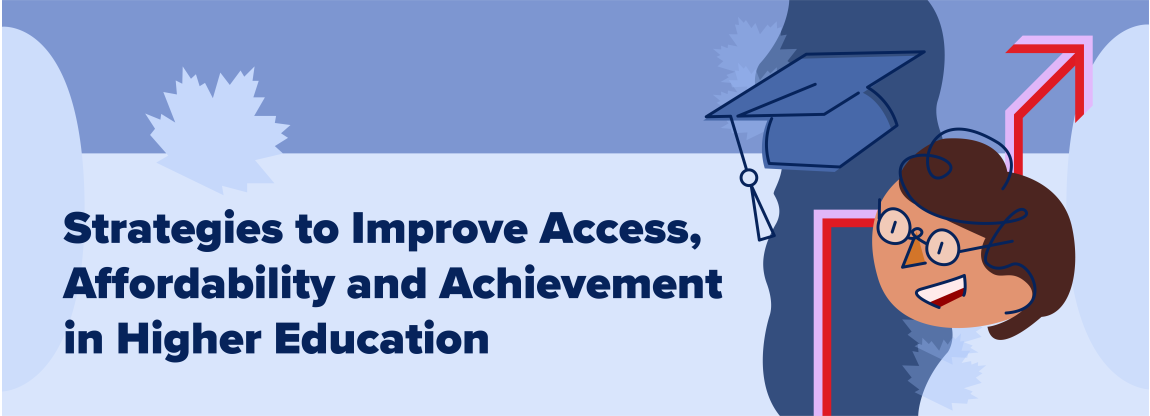Strategies to Improve Access, Affordability and Achievement in Higher Education
Strategies to Improve Access, Affordability and Achievement in Higher Education
Affordability initiatives in higher education can help to create a more supportive learning environment, reducing financial stressors that affect many students. In turn, this helps to enhance student engagement, improve satisfaction, and foster academic success.
As an educator, you play a crucial role in helping to address these challenges. Let's explore how affordability affects outcomes and learn about strategies to help all students succeed.
How Does Affordability Affect Access & Achievement?
Financial insecurity can affect student success in several ways, including:
- Delayed enrollment, attendance challenges, and higher dropout rates.
- Increased stress and anxiety.
- Reduced focus on studies due to work commitments.
- Low energy and poor physical health through poor nutrition.
- Limited access to essential course materials.
Students who struggle with affordability are more likely to achieve lower grades, graduate later, or drop out. A study by Léger and Embark found that 60% of post-secondary students had to cut out certain necessities to make ends meet, with nearly one third of students considering dropping out of school because of lack of funds.
Strategies to Improve Affordability and Achievement
Improving access and affordability can greatly improve outcomes. Here are four key approaches to tackling student affordability issues and supporting student success:
1. Inclusive Access Programs
Inclusive Access is a course material delivery model that provides students with digital access to their required resources through their course fees on or before the first day of class, making access affordable for everyone.
Benefits of these programs include:
- More success. Students can start learning and completing their homework assignments right from the start of class.
- More convenient. Students no longer have to wait for financial aid or experience delays in receiving their required course materials.
- More savings. Through Inclusive Access programs, students can benefit from significant savings on their course materials.
Find out more about Inclusive Access programs here.
2. Financial Literacy Education
Many students have limited financial education prior to attending a higher education institution. This can create significant stress, especially for students living away from home for the first time.
Institutions can support students by:
- Offering information on budgeting and financial planning workshops taking place on campus.
- Providing resources about bursaries, scholarships, and grants.
- Encouraging early applications to financial aid programs.
3. Flexible Payment Options
The start of semester can mean large costs for tuition, accommodation, and course materials. Some students struggle to pay these costs upfront.
Academic institutions can help by implementing flexible payment plans, enabling more students to create and follow a realistic budget for the full year. This may include:
- Monthly installment plans.
- Deferred payment options for course materials.
- Emergency micro-loans for unexpected expenses.
- Upfront rebates for students who have applied for specific grants or bursaries that can be delayed by several weeks.
4. Improving Student Support Services
Students often benefit from specific support services, but many are unaware they exist or face challenges accessing them. Educators can help by providing:
- Dedicated financial aid advisors with flexible hours and access (online, in-person, etc.)
- Career services to help students find flexible part-time work
- Mental health resources to address financial stress
- Referrals to food banks, community fitness, and other programs to support physical and mental well-being
Conclusion
Initiatives to improve affordability and outcomes are not just about reducing costs. These initiatives create a supportive learning environment more conducive to academic achievement and satisfaction.

